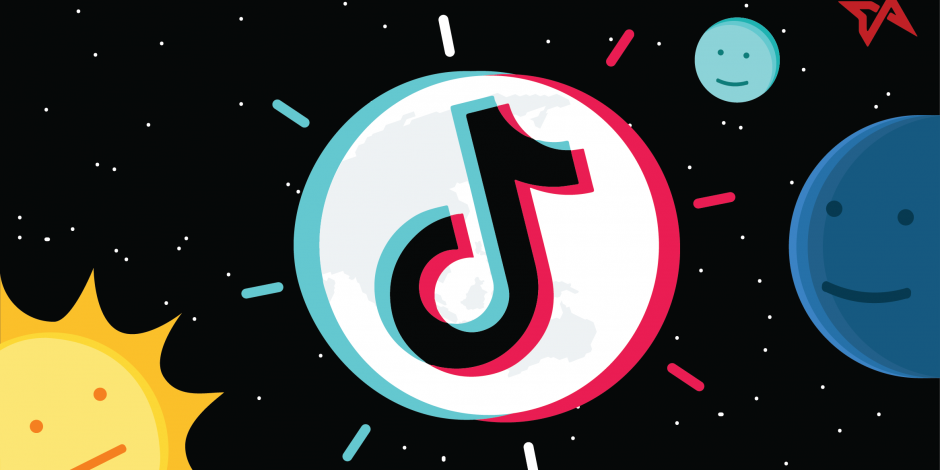In 2010, I wrote my first ever social media post: “What is this Buzz thing?” I typed it out on the family computer, posted it to the now-defunct Google Buzz, and immediately clicked the like button on my own post. Looking back on it now, it’s difficult to believe it was ever new, since everything about the website seems comically antique—the plain-text posts could be “re-shared,” a phrase which itself seems immediately outdated, and the flat interface prominently features email among its sharing options. Still, on the hulking PCs in my school’s basement computer lab, Buzz felt fresh and immediate. Our blinking cursors became launchpads to shoot truncated words and emoticons across the room, like passing virtual notes. This is the same sort of feeling that apps like TikTok invoke today.
Comparing Buzz to the social media of today is a dizzying testament to how much has changed in the last nine years. Walls of text have been replaced by shorter, punchier tweets. YouTube videos have gone from advertisements to earnest diaries and back again, and apps have become the preferred way to socially connect, as our laptops have become places to work, or at least to pretend to.
“Our blinking cursors became launchpads to shoot truncated words and emoticons across the room, like passing virtual notes. This is the same sort of feeling that apps like TikTok invoke today.”
In 2018, the Chinese tech startup ByteDance revived the shell of the lip-syncing app Musical.ly into TikTok, which is now the world’s most downloaded app. On a cursory scroll-through, TikTok is both jarring and immersive as it pelts the viewer with a rapid-fire stream of looping clips. Unlike the rest of social media, TikTok is on the results of an algorithm rather than a user’s friends. The pedigree of ByteDance’s machine learning ventures shows in the ‘For You’ page, which uses artificial intelligence to tailor its content to your tastes over time and present a continual stream of user-targeted content, like a smarter Instagram Explore page.
The frenetic quality of the TikTok user experience is also partially due to the complex way memes proliferate through it. As social media evolved, the definition of a meme became increasingly difficult to pin down. Gone are the LOLcats days of image macros with blaring Impact font, visually alerting the viewer that what they are seeing is meant to make them laugh. Since videos are capped one minute, there is no exposition on TikTok, and therefore, hidden meaning needs to be condensed into sound. Breaking down the meme format to its bare essentials makes way for subtler forms of humour. TikTok, though initially targeted at the lucrative tween demographic, is an accidentally perfect vessel for sarcastic and absurd millennial humour.
Memes aside, TikTok is a gem for burgeoning creatives. It uniquely breaks down barriers to content creation with its intuitive filming process, and the way memes propagate through the platform invites imitation and enables unknown accounts to go viral overnight. While the tag #shortfilms highlights the most artistic examples, viewers will be impressed by stylistic skill even in the simplest clips. In order to tell an effective story on TikTok, users need both an understanding of the app’s shared language and the basics of lighting, composition, and editing.
However, some of this creative appeal turns to cavities upon further inspection. In a culture becoming increasingly cautious about technology and privacy, TikTok is unashamed about mining your data. The looming corporate presence on TikTok surely stands to benefit from this, as the platform has been monetized through both ads interspersed in your scrolling and more subtle product placement. ELF Cosmetics recently commissioned the song behind the #eyeslipsface trend, and this encroachment of branding into what appears to be organic trends feels uncomfortable, if not surprising.
:Memes aside, TikTok is a gem for burgeoning creatives. It uniquely breaks down barriers to content creation with its intuitive filming process, and the way memes propagate through the platform invites imitation and enables unknown accounts to go viral overnight.”
Privacy concerns are compounded for younger users. Over its lifespan, TikTok has managed to attract a broad user base whose sheer demographic diversity is at times uncanny—it is odd to see cops, teachers, priests, and The Washington Post interspersed with high-schoolers. There’s an uncomfortable history of pedophiles on TikTok, and if it was difficult to talk to your kids about the net in 2010 it seems doubly so now.
For an app best known for popularizing a Mia Khalifa diss track, TikTok is already remarkably culturally significant. The same structural mechanisms that produce viral content break down barriers to getting creative work seen. At the same time, it is a hallmark of the issues that mar the ever evolving internet, and the tradeoffs we have made to keep our entertainment free and constant.









Interesting blog! Thanks for sharing!. Check out my blog.